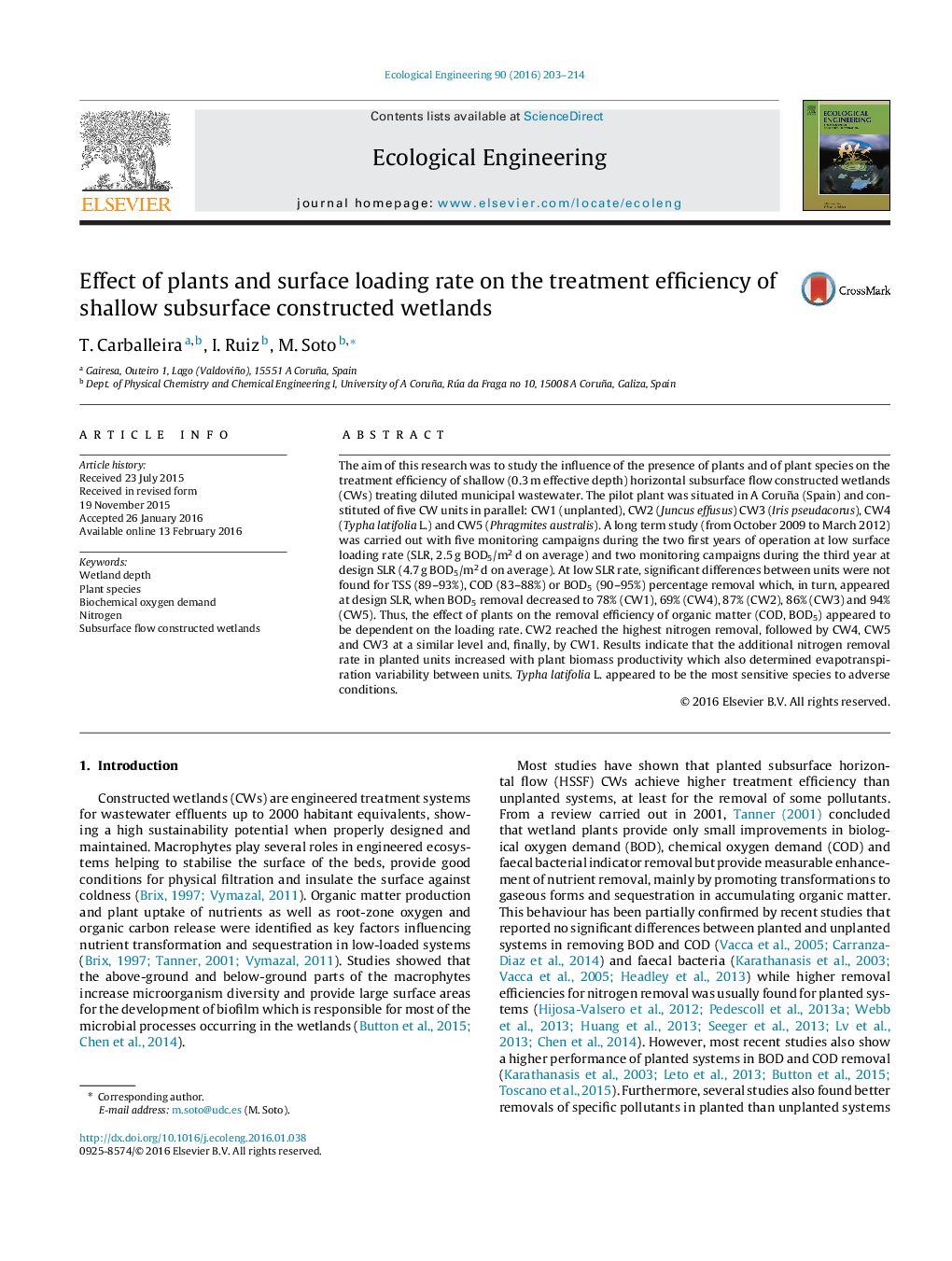| کد مقاله | کد نشریه | سال انتشار | مقاله انگلیسی | نسخه تمام متن |
|---|---|---|---|---|
| 4388663 | 1618009 | 2016 | 12 صفحه PDF | دانلود رایگان |
• Plants: P. australis PA, I. pseudacorus IP, J. effusus JE, T. latifolia TL, unplanted UN.
• At low loading rate, plants did not influence TSS, COD or BOD5 removal.
• At design loading rate, the BOD5 removal efficiency was PA > IP > JE > UN > TL.
• Pathogen and NH3-N removal efficiency depended on SLR and plants.
• Evapotranspiration and NH3-N removal correlated with plant productivity.
The aim of this research was to study the influence of the presence of plants and of plant species on the treatment efficiency of shallow (0.3 m effective depth) horizontal subsurface flow constructed wetlands (CWs) treating diluted municipal wastewater. The pilot plant was situated in A Coruña (Spain) and constituted of five CW units in parallel: CW1 (unplanted), CW2 (Juncus effusus) CW3 (Iris pseudacorus), CW4 (Typha latifolia L.) and CW5 (Phragmites australis). A long term study (from October 2009 to March 2012) was carried out with five monitoring campaigns during the two first years of operation at low surface loading rate (SLR, 2.5 g BOD5/m2 d on average) and two monitoring campaigns during the third year at design SLR (4.7 g BOD5/m2 d on average). At low SLR rate, significant differences between units were not found for TSS (89–93%), COD (83–88%) or BOD5 (90–95%) percentage removal which, in turn, appeared at design SLR, when BOD5 removal decreased to 78% (CW1), 69% (CW4), 87% (CW2), 86% (CW3) and 94% (CW5). Thus, the effect of plants on the removal efficiency of organic matter (COD, BOD5) appeared to be dependent on the loading rate. CW2 reached the highest nitrogen removal, followed by CW4, CW5 and CW3 at a similar level and, finally, by CW1. Results indicate that the additional nitrogen removal rate in planted units increased with plant biomass productivity which also determined evapotranspiration variability between units. Typha latifolia L. appeared to be the most sensitive species to adverse conditions.
Journal: Ecological Engineering - Volume 90, May 2016, Pages 203–214
